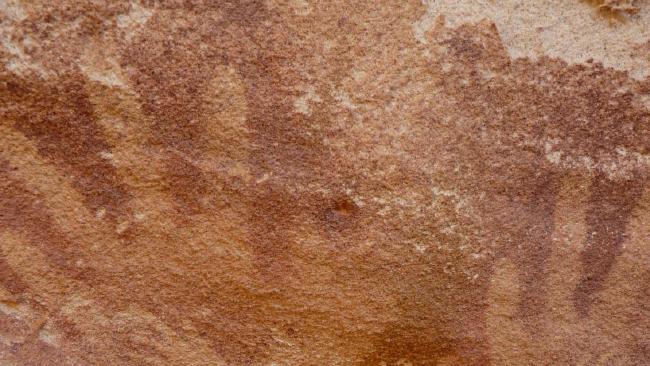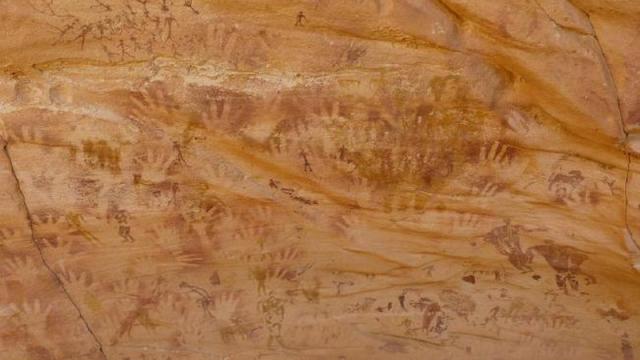The Wadi Sura cave in the Libyan Desert features a number of stencil paintings dating back to between 6000 and 8000 years ago, including over a dozen tiny human-like hand prints. Since its discovery, the hands were thought to belong to human babies, but an anthropologist now says they’re not human at all.
Sorry folks, it’s not aliens. It turns out, the iconic stencils were made using the forefeet of reptiles. Such is the conclusion of a new study published in the Journal of Archaeological Science, led by Emmanuelle Honore from the McDonald Institute for Archaeological Research in the UK.

Image: Emmanuelle Honore
The Wadi Sura II natural rock shelter, also known as the Cave of Beasts, was discovered in the Libyan Desert in 2002. Along with the dozen or so tiny hand prints, it features 7000-year-old Neolithic rock paintings of around 5000 figures of humans and various animals.

Image: Emmanuelle Honore
But when Honore visited the site in 2006, she began to question whether the tiny hands, with their alien-like elongated fingers, actually belonged to humans. She returned to the site a few years later to learn more, and to challenge the hypothesis that they belonged to babies, children or premature infants.
Following this expedition, her team then studied the size and shape of the prints more closely, then compared the archaeological evidence with samples of full term and pre-term babies born at a French hospital. Experts were also brought in to rule out the possibility that the prints belonged to nonhuman primates. Nothing matched, so the researchers began to investigate the reptile hypothesis.
After consultation with several zoos and reptile experts, the data suggested that the proportions closely matched the legs of monitor lizards, or the feet of young crocodiles. If true — and that’s a big if — these Neolithic people used the parts of animals to stencil figures on the cave wall. But even the researchers themselves are exercising caution at the findings.
“We are not sure if we will get a definitive answer, but our first results are also very convincing,” noted study co-author Brigitte Senut on ABC News.
[Journal of Archaeological Science via ABC News]
Top Image: Emmanuelle Honore
